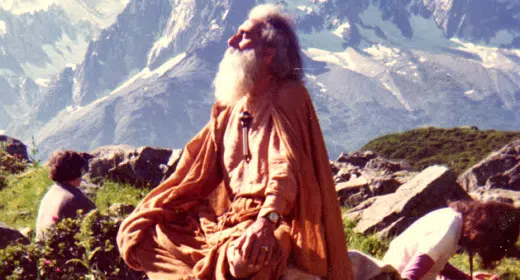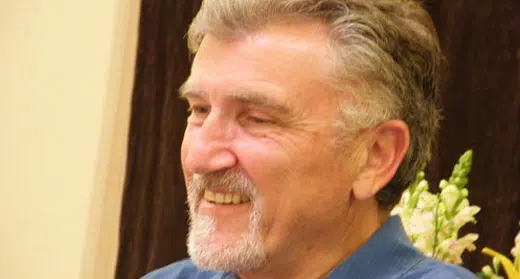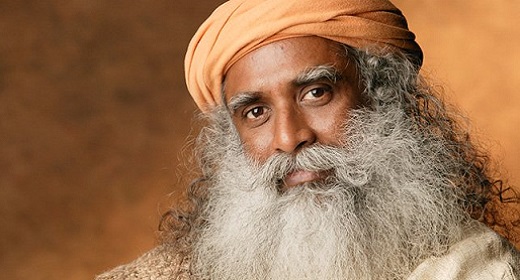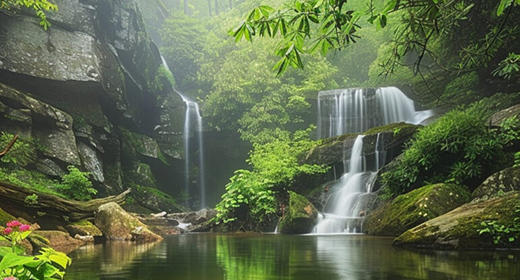Dhammananda bhikkhuni Overcoming Resistance Against Theravada Bhikkhuni Ordination presented at Stanford University 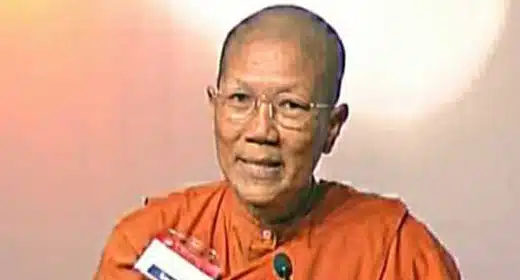 With a turning of the new millennium, things are changing in a much more rapid fashion. With internet connection, the world seems to have shrunk considerably. An event happening in one small corner of the world can become known to the rest of the world within hours. Ordination of women in Theravada Buddhism that had been denied for centuries, is, also, taking a new turn with the turning of the millennium. This paper intends to look into the recent movement and resistance against it.
With a turning of the new millennium, things are changing in a much more rapid fashion. With internet connection, the world seems to have shrunk considerably. An event happening in one small corner of the world can become known to the rest of the world within hours. Ordination of women in Theravada Buddhism that had been denied for centuries, is, also, taking a new turn with the turning of the millennium. This paper intends to look into the recent movement and resistance against it.
Establishment of Bhikkhuni Ordination.
Historical context of the topic at hand started as far back as 2600 years in the land which is now known as India. Women joined the Order of ordained monks led by the Buddha not without difficulty but the point was the Buddha accepted them because they have the spiritual potentiality to be enlightened.
This we note, is the first time in the history of World Religions that women were recognized for their equal spiritual potentiality. Women in a large number followed the Queen Mahapajapati, the first bhikkhuni who was also the Buddha’s step-mother and aunt who personally breast-fed Prince Siddhartha (who later became the Buddha) at his early age.
For the first time also Buddhism provided a formal religious lifestyle for a community of female mendicants side by side with their male counterparts.
In the beginning, the bhikkhus, their male counterparts still treated ordained women the same way they were accustomed to in their household life. That is, they expected women to serve them i.e. wash their robes, their seats, etc. The Buddha was very clear when he allowed the women to join the Order that he wanted them to have equal opportunity to practice towards the path of enlightenment which was the spiritual goal for both sanghas. He set rules, one after another, preventing monks from taking advantage of the bhikkhunis.
This acceptance of women by the Buddha went against the social norm of the land, at the tine and some monks might have felt uncomfortable as they could not expect the ordained nuns to serve them any more. After that the bhikkhunis began playing an equally significant role as spiritual teachers, and some of them did very well too. This might have been in the air but there was no record of incidents to support this idea during the Buddha’s time.
The First Council
It was at the First Council which took place only 3 months after the Great Passing Away of the Buddha that we witness, for the first time,
Clear evidence of resistance from the monks.
Ananda who was the Buddha’s chosen and appointed attendant for 25 years before the Buddha passed away was gaining popularity after the great passing away of the Buddha. It was obvious for the kings and ministers to approach him for teachings, this was clearly recorded in the Sutta.
However, Maha Kassapa, a senior and strict elder called for a meeting exclusively of 500 arahats (enlightened monks) at a place outside Rajgir, the capital of Magadh. He reserved all the residences in Rajgir for monks who would be attending the meeting which later came to be known as the First Council.
There was a discussion whether Ananda was going to be included as he was not fully enlightened. But the majority of the monks agreed that they could not do without Ananda as Ananda had been with the Buddha for the last 25 years and had learned all the Buddha’s teaching more closely than anyone else.
So Ananda was included in the list of the 500 enlightened monks, moreover, just before the actual Council started, Ananda was also enlightened. He flew in[?], as an announcement of his enlightenment, and took his prepared seat in the meeting.
Maha Kassapa, with his seniority, presided over the Council. But before they proceeded on the actual meeting, they made Ananda confess on five points of transgression (apatti), two of them related to our concern in this paper.
One was that, at the time of the Buddha’s passing away, Ananda allowed women to pay respect to his body before the senior monks. Also the women’s tears dropped over the body of the Buddha.
Ananda explained that he was concern for the safety of the women and made such arrangement so that women could return home safely as it was getting dark. He did not see that as a transgression, but if the sangha should think so then he was willing to confess.
Maha Kassapa directed another transgression at Ananda for being a key person in persuading the Buddha to consider giving ordination to bhikkhunis.
To this, Ananda again clarified himself that he did not think it was a transgression, as the woman who came to ask for ordination was the Buddha’s own step-mother who had literally breast-fed the young prince after his own mother died at a very young age. But to pacify the Sangha, again he was willing to confess.
For the first time, it became clear that when the Buddha accepted the women into the bhikkhuni order, there were some monks who were displeased and this came to light immediately after the Buddha passed away.
Maha Kassapa, it should also be noted was not popular among the bhikkhunis. One time when he went to give them preaching (Ovada), one bhikkhuni spoke to his face challenging him regarding his understanding of Dhamma, and even pointing out that his knowledge was of no comparison to that of Ananda. Unknowingly Ananda was put in a hot-seat, and again he had to seek forgiveness from Maha Kassapa.
One Sri Lankan monk pointed out the fact that there were no bhikkhunis at the first Council. This should not be so according to the Vinaya as during this Council there was also a recitation of the Bhikkhuni Patimokkha which in practice must have been recited only by the bhikkhunis. Thus, this supposed-absence of the bhikkhunis was questionable, despite the fact that Maha Kassapa who called for the meeting was not in favor of the bhikkhunis himself.
The result of this meeting was to agree upon all the teaching of the Buddha. The Vinaya was recited by Upali and the Dhamma was recited by Ananda. Even though the Buddha had given clear permission should there be minor rules which appear awkward to follow in the future, if the sangha so desire, they can lift it up. But as they could not decide at this Council which were the major rules and which were the minor rules, they agreed to keep all in tact, no removal and no addition.
The sect is called Theravada (the words and agreement of the elders) because they followed this decision. So this has become a strong attitude of the Theravadins who proudly preserve the tradition, at least in words.
Situation in Sri Lanka
Sri Lanka was the first country outside India to have establish the bhikkhuni sangha as early as 3rd century B.C. during the time of the great Buddhist King, Asoka. Sanghamitta bhikkhuni, Asoka’s daughter, went on royal invitation with a group of learned bhikkhunis to establish the first female sangha outside India.
In 433 A.D. the Sri Lankan bhikkhunis were invited to give ordination to bhikkhuni in China. They landed in Nanking and gave the ordination to 300 Chinese women at the Southern Forest Monastery. This was under the suggestion of a renowned Chinese pilgrim, Fahien who visited and witnessed the prosperity of the bhikkhuni Order on the Island. However, Sri Lanka lost its own tradition in 1017 A.D. with the invasion of the Jola King from South India. And the lineage could not be revived. The strong connection between Sri Lanka and India was destroyed by the invasion of the Turk Muslims in India approximately at the same time.
For hundreds of years Sri Lanka did not have women ordained until 1905 when Catherine de Alvis initiated the ten-precept nuns having taken the lineage from Burma. It was not until 1988 that the first group of Sri Lankan ten-precept nuns
received full ordination from the Chinese lineage in L.A.1 The lineage was strengthened in 1998 by another International ordination organized by Fo Guang Shan in Bodh Gaya, India. It was this lineage that became the seed of the present revival of Theravadin bhikkhunis in countries like Thailand, Vietnam, U.S.A., Germany, Indonesia.
The discussion about the revival of bhikkhuni sangha was in the air for 3-4 decades. Some senior monks resisted, disagreed. In Sri Lanka there are three Buddhist sects, Syamvamsa (from Thailand), Amarapura (from Burma) and Ramanna (Mon from lower Burma), and they work independently in their administration. The decision to support or to ordain bhikkhunis was also independent, so monks who suppored the movement would go ahead and give ordination, whereas monks who do not support may criticise, but nothing more than that. The Government has not accepted the bhikkhunis but it allows the title at least on the passport and ID. card.
Sri Lankan bhikkhunis were formed and strengthened with a strong support from a senior monk, Ven. Inamaluwe Sri Sumangalo of Syamvamsa, the present abbot of Dambulla. Now, in the whole country, there are more than 400 bhikkhunis. They have become the seed of ordination for bhikkhunis which is now slowly spreading to other Theravadin countries.
Bhikkhuni lineage never arrived in Thailand even though the country has been a Buddhist country from the beginning in 13th Century A.D. To start a bhikkhuni sangha, the bhikkhus insisted that they must be ordained first by bhikkhunis, as the country never had bhikkhuni Sangha, so it never got started.
From 1928, as a reaction to women who sought ordination from the bhikkhu-only sangha, when the Sangharaja passed an order restricting Thai monks from giving any kind of ordination to women.
In 1932 Thailand moved from Absolute monarchy system of national administration to democracy according to the constitution. But somehow this 1928 order of the Sangharaja was still quoted as reason for the present Sangha to deny considering acceptance of bhikkhuni sangha (2003).
The main textual obstacle, which has always been quoted, is that it is against dhamma-vinaya, because giving ordination to women must first start by taking ordination from bhikkhuni sangha then bhikkhu sangha. This insistence blocked any possible attempt from the women’s side for centuries.
After the 1928 prohibition, no women could have ordination from Thai monks. Not until 1971 when the first case of Thai woman (Ven.Bhikshuni Voromai Kabilsingh) went to Taiwan and became the first Thai bhikshuni. But with lack of Buddhist education she could not start a sangha. However, she built the temple for bhikkhunis outside Bangkok. This temple became the seat of bhikkhuni sangha in a later period.
The major resistance comes from the structure of Buddhist institution which is intertwined with the government. In Thailand, the monks apart from following the vinaya, fall also under Sangha Act. This connection with the government took place soon after the downfall of Ayudhya in 1767 A.D. when the Burmese attacked and burned down the capital. The Burmese took siege of Ayudhya for 3 months before being driven out by the Great King Tak Sin.
King Tak Sin tried his best to revive Buddhism, starting from a purge of the Sangha so that they could continue the lineage with purity.
King Rama I of the present Dynasty was the first one to introduce the Sangha Act having observed the degenerated sangha during the time of turmoil. Since then, the
bhikkhu sangha has been under both the vinaya (monastic code of Buddhist monks) and the Sangha Act.
The first line of the Sangha Act begins by defining the word Sangha as: “Sangha means bhikkhu sangha.”
This itself is problematic for our study on the introduction of bhikkhuni sangha.
The Buddha established the fourfold Buddhists namely bhikkhus (monks), bhikkhunis (female monks), laymen and laywomen as the foundation of Buddhism. He trusted that these fourfold Buddhists would study his teaching, put it to practice and defend it.
But in Thailand the bhikkhunis, one of the fourfold Buddhists was removed in the Act itself.
According to the agreement of the elders from the First Council, they agreed that nothing was to be removed and nothing was to be added, and that has been the strong hold of the Theravadins who claim to be conservative and strict according to the original.
The question arises of whether the order of the Sangharaja in 1928 forbidding Thai monks to give ordination to women is in line with this proclamation of the Theravadin ezample.
It in fact goes against the spirit of Theravada, and most important, it is going against the intention of the Buddha when he said “O monks I allow you to give ordination to bhikkhunis.” (Cullavagga, Vinaya Pitaka)
Some of the resistance was based due to lack of information and education. Some of the monks would insist that the knowledge to support the bhikkhunis must come only from the Tripitaka. But the record of the Tipitaka covers only the first council that is only 3 months after the Great Passing Away of the Buddha.
Because at the First Council bhikkhunis were not included, some people thus came to conclude that bhikkhunis had come to an end at that time.
As an outstanding example, we have the story of Sanghamitta, Asoka’s daughter who went to give ordination to Sri Lankan women in the 3rd century B.C. but, still contrarily, even the Buddhist scholars’ (Royal Institute) still claimed that that was she was the last bhikkhuni.
The resistance against bhikkhuni ordination is based on tradition, patriarchal tradition of the country. The standard text book for the monks provides distorted-information regarding bhikkhunis. For example, Sanghamitta went with a retinue of learned bhikkhunis to give ordination to Princess Anula and her followers. In Dipavamsa, there was a clear record even of the names of 10 bhikkhunis following Sanghamitta. But in this text, it simply says that “Sanghamitta went with her followers, possibly not sufficient sangha, therefore the ordination was not valid and we can considered the end of bhikkhuni sangha in the third Century B.C.”
This is the situation that we have found in the study on this issue. Much of the resistance has no basis, purely out of lack of information and education on the part of the sangha. The most serious resistance was the fact that many do not realize that what they believe is baseless, and has no support in Buddhist teaching.

